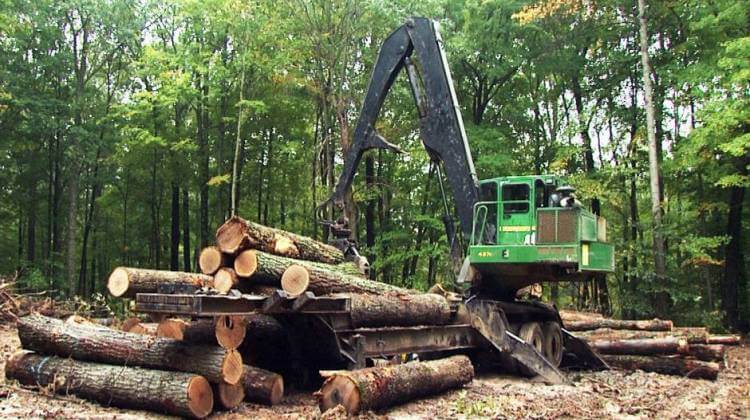The logging project in the National Life Forest is substantially complete. This project thinned the forest which is bordered by the main campus, Route 2 and Route 12. The harvesting and timber removal are done, and final site restoration will occur after the ground dries out, likely during the first half of June.
The project met several goals:
- The forest was thinned, low quality trees were harvested, and growing space was opened for high quality trees.
- Small patch cuts were created to allow for the development of the understory, to establish the next generation of trees, and to provide low-cover for wildlife.
- A small number of white ash trees, which are at risk for infestation by an invasive non-native species, the Emerald Ash Borer (EAB), were harvested.
- Usable access through the forest was developed. This access can be used during future forest management operations.
The next step will be final site restoration in June, during which the main skid trail will be swept free of significant debris and smoothed. Off the trail, the branches of the harvested trees will stay in the woods. The nutrients in them will be recycled back into the soil through the normal process of decay. They will likely be visible and obvious for several years, but they will eventually decay and disappear. They will be most obvious this year. While not the most beautiful part of the project for some people, this is a normal, and ecologically beneficial part of the harvesting.
The National Life Forest is managed to meet several objectives: producing forest products through ecological forestry, providing a recreational resource, and enhancing wildlife habitat features. Management to meet these objectives is described in a Forest Management Plan. The work in the forest was overseen by a Vermont Licensed Forester, and the Management Plan and activities were approved by the Department of Forests, Parks and Recreation, through the Use Value Appraisal program.
The recreational trails are now open, but users should take care to watch for logging debris, especially where the recreational trails cross the skid trail. I would like to thank the trail users for their patience and for refraining from using the trail during this project.
Looking forward, the National Life Forest is now on a schedule of similar harvests every 15 to 20 years, with the next thinning likely to occur in the 2030’s.
– Craig Strachan

